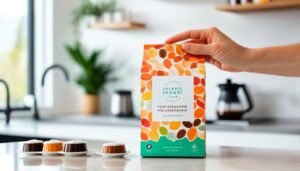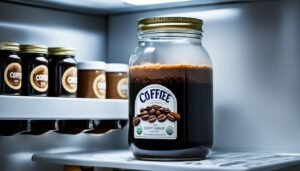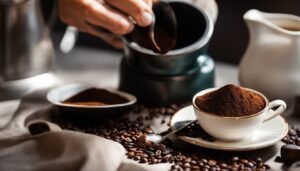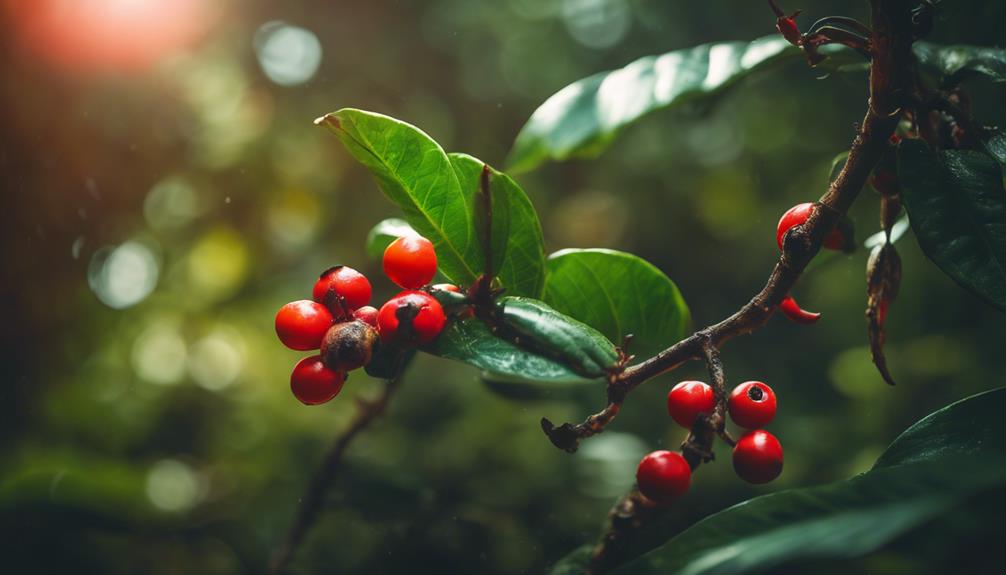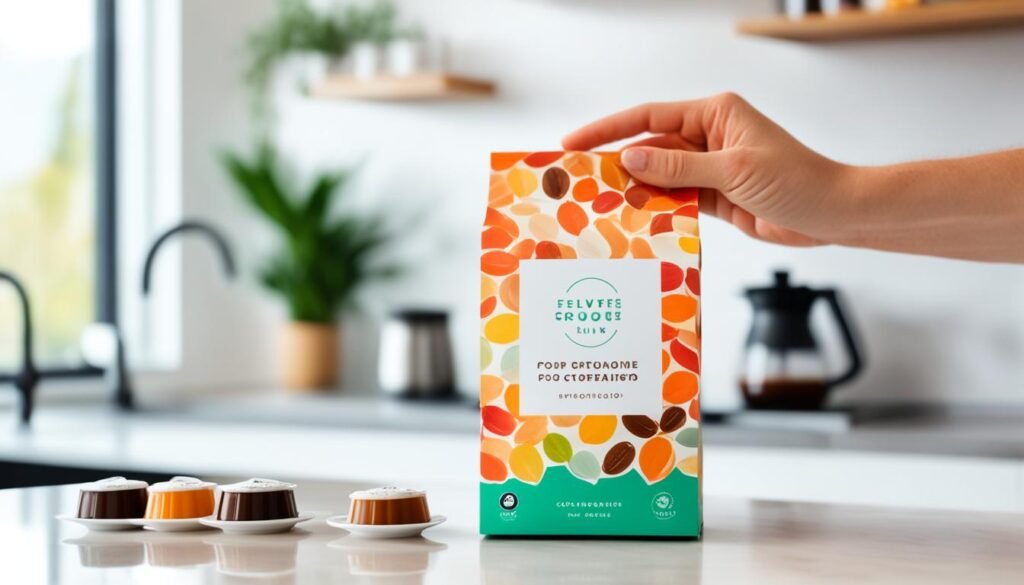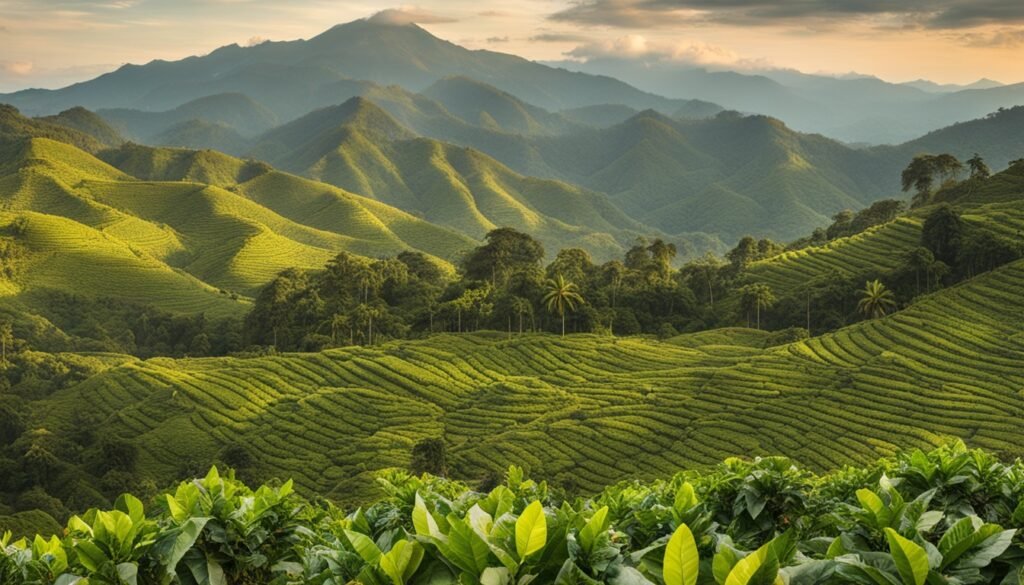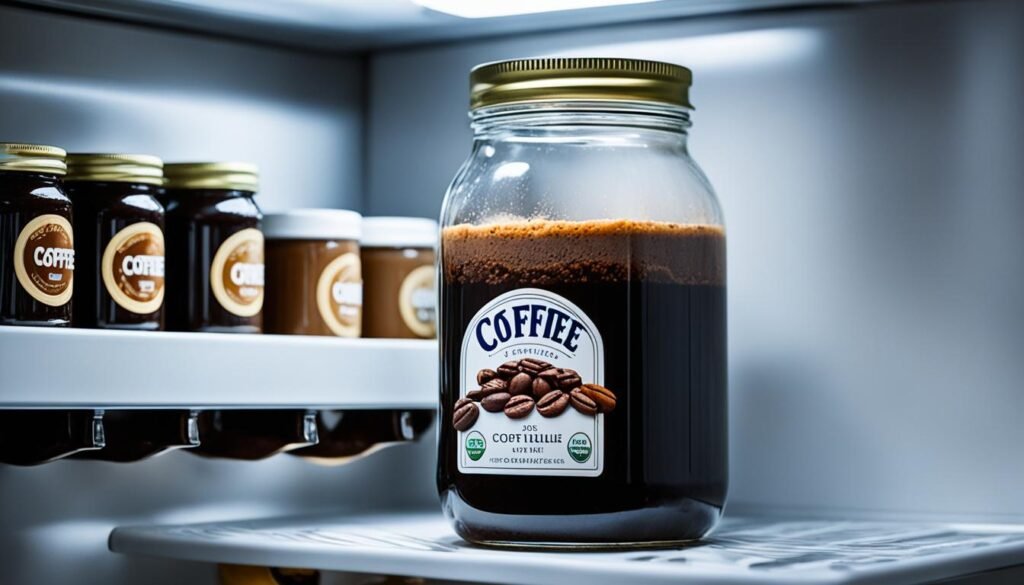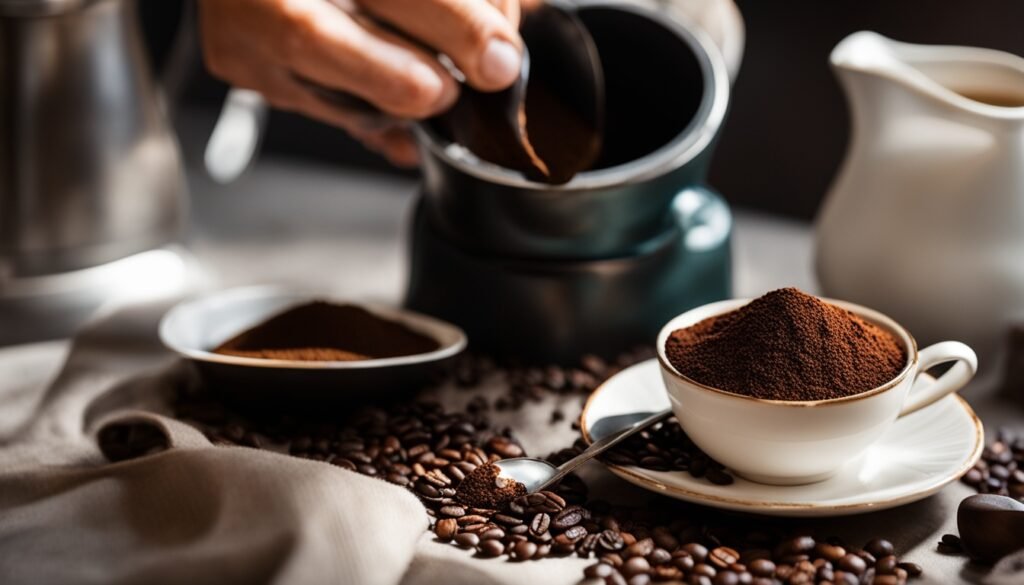If you’re a true coffee lover, it’s time to elevate your brew with the magic of coffee roasting. By roasting your own beans, you can unlock the rich flavours and aromas that make coffee such a beloved beverage.
In this article, we’ll guide you through the coffee roasting process and explore the different techniques and profiles that can take your coffee game to the next level. Whether you’re a seasoned barista or a curious beginner, this article will provide you with the knowledge and tools to become a coffee roasting pro.
Key Takeaways
- Coffee roasting is the key to unlocking rich flavours and aromas in your coffee
- The coffee roasting process involves several stages that impact the flavour profile of the beans
- Different coffee roasting techniques can influence the taste and aroma of the final brew
- Coffee roasting profiles refer to the specific characteristics of different roasts, including light, medium, and dark
- With the right equipment and knowledge, you can try home coffee roasting and achieve professional-level results
- Specialty coffee beans can be further enhanced through expert roasting techniques
- By monitoring factors such as time and temperature, you can achieve the best coffee roasting results
Understanding the Coffee Roasting Process
When it comes to coffee roasting, the process plays a crucial role in determining the final flavor and aroma of your brewed coffee. The process involves taking the green coffee beans and roasting them until they reach the desired level of roast.
The roasting process is typically divided into three stages: drying, browning, and development. During the drying stage, the coffee beans lose their moisture content and start to turn yellow. In the browning stage, the beans turn brown as the heat causes chemical reactions that produce oils and sugars. Finally, during the development stage, the beans reach the desired level of roast, at which point they are cooled and ready to be brewed.
Importance of Quality Coffee Beans
The quality of the coffee beans used in the roasting process plays a crucial role in the final flavor and aroma of the coffee. Sourcing high-quality beans from reputable suppliers can ensure that you get the best possible results from your roasting efforts.
Factors such as the origin, altitude, and processing method of the beans can all have an impact on the flavor profile. It’s worth experimenting with different beans to find the ones that work best for your taste preferences.
Exploring Coffee Roasting Techniques
If you’re looking to experiment with coffee roasting, there are many techniques to choose from. Each method influences the flavour and aroma of the final brew in its unique way. Here are some popular techniques to consider:
Traditional Roasting
Traditional coffee roasting involves heating green coffee beans in a rotating drum over an open flame. The beans are roasted until they reach the desired level of darkness, with the heat and timing carefully controlled by the roaster. Traditional roasting results in a rich, smoky flavour with low acidity.
Modern Roasting
Modern coffee roasting techniques use high-tech equipment to roast beans with greater precision. This method offers greater control over temperature and timing, allowing roasters to experiment with different profiles and achieve a greater range of flavours. Modern roasting tends to produce lighter, fruitier flavours with higher acidity than traditional methods.
Whichever method you choose, be sure to source high-quality coffee beans for optimal results.
Unlocking the Secrets of Coffee Roasting Profiles
If you’re a coffee lover, you’ll know that there are countless varieties and blends of coffee available, each offering a unique taste and aroma. This is largely due to the coffee roasting process, which gives the beans their distinct characteristics.
Light Roasts
Light roasts are roasted for a shorter duration, resulting in a light brown color and a milder flavor. These roasts have a higher acidity content and often retain the nuances of the original bean’s flavor, making them a popular choice for those who prefer a brighter and more delicate coffee taste.
Medium Roasts
Medium roasts are roasted for a slightly longer duration, resulting in a medium-brown color and a balanced flavor. These roasts have a lower acidity content and begin to develop the caramelized sugars and oils, resulting in a fuller body and a slightly sweeter taste.
Dark Roasts
Dark roasts are roasted for the longest duration, resulting in a dark brown or black color and a bold flavor. These roasts have a lower acidity content and are characterized by their smoky, roasted flavors. They lose many of the nuanced flavors of the original beans, but gain a deeper and more complex character.
Understanding coffee roasting profiles can help you make informed choices when selecting your coffee beans, enabling you to tailor the flavor profile to your individual tastes. Whether you prefer a bright and delicate light roast or a bold and smoky dark roast, experimenting with different coffee roasting profiles can open up a whole new world of flavor and aroma.
The Equipment You Need for Home Coffee Roasting
If you’re looking to take your coffee experience to the next level, then home coffee roasting is a great place to start. But what equipment do you need to get started? Here are the essentials:
A Coffee Roaster
The heart of any coffee roasting operation is the roaster itself. There are several types of coffee roasters available, including fluid bed, drum, and hybrid models. Each has its own unique features, so it’s important to do your research and find the one that best suits your needs.
Cooling Tray
Once your coffee beans have reached their desired roast level, they need to cool down as quickly as possible to prevent them from continuing to roast. A cooling tray is an essential tool for this process, allowing you to rapidly cool your beans and achieve consistent results.
A Scale
Accurate measurements are crucial for a successful coffee roast, so investing in a reliable scale is a must. Look for a model that can weigh your beans to the nearest tenth of a gram for maximum precision.
A Heat Source
Your coffee roaster will require a heat source to operate, and there are several options available including gas, electric, and induction. Each has its own unique benefits and drawbacks, so be sure to consider your specific needs before making a decision.
A Ventilation System
Coffee roasting produces smoke and other fumes that can be unpleasant or even harmful to inhale. A ventilation system is essential to ensure that your home remains safe and comfortable during the roasting process.
With these essential tools in your arsenal, you’ll be well on your way to unlocking the rich, complex flavors and aromas of freshly roasted coffee. Happy roasting!
Specialty Coffee and the Art of Roasting
When it comes to coffee roasting, the quality of the beans is just as important as the roasting technique employed. This is especially true for specialty coffee, which is sourced from high-quality beans with unique and complex flavor profiles.
The art of roasting specialty coffee involves careful monitoring of the roasting process to bring out the best in each bean. With expert roasting techniques, the subtle flavors and aromas intrinsic to each bean can be enhanced, resulting in a truly exceptional cup of coffee.
Whether you are a coffee enthusiast or a professional barista, specialty coffee and the art of roasting provide a world of possibilities to explore. By sourcing the finest beans and experimenting with different roasting techniques, you can unlock the full potential of your coffee and savour a truly unique experience.
Tips for Achieving the Best Coffee Roasting Results
Coffee roasting is an art that requires attention to detail and experience. Whether you’re a beginner or an experienced roaster, here are some useful tips to help you achieve the best results:
- Choose high-quality beans: Start with high-quality, freshly roasted beans for optimal flavor.
- Measure your coffee: Use a kitchen scale to accurately measure the amount of coffee beans you’re using.
- Preheat your roaster: Preheat your roaster to the desired temperature before adding the beans.
- Use a timer: The length of time your beans roast can significantly impact the flavor. Use a timer to ensure consistency in your roasting times.
- Monitor the roast: Watch the beans closely as they roast to ensure they don’t burn or over-roast.
- Cool your beans: Once the beans are roasted, immediately remove them from the heat source and cool them as quickly as possible to prevent over-roasting.
- Allow the beans to rest: After roasting, allow the beans to rest for at least 24 hours before brewing to allow the flavor to develop fully.
By following these tips, you can achieve the best coffee roasting results and unlock the full potential of your beans.
The Power of Coffee Roasting: Unleash Your Inner Barista
By now, you have learned about the amazing benefits that coffee roasting can have on the flavor and aroma of your coffee. With the right equipment and a little bit of know-how, you too can experience the joy of creating a perfect cup of coffee in the comfort of your own home.
Whether you prefer a light, medium, or dark roast, understanding the coffee roasting process and techniques can help you achieve the best results. By experimenting with different beans and roasting profiles, you can unlock a whole new world of flavors and aromas.
Don’t be intimidated by the thought of home coffee roasting – it’s easier than you might think! With the right equipment, such as an entry-level coffee roaster, and a bit of practice, you can hone your skills and impress your friends and family with your barista-like expertise.
Get Creative
One of the best things about coffee roasting is that it allows you to get creative in the kitchen. You can experiment with different blends, roast levels, and brewing methods to find what works best for you. Try adding a pinch of cinnamon or vanilla to your coffee grounds before roasting for a delicious twist on your favorite brew.
Monitor Your Roast
Remember to keep an eye on your roast as it progresses – this is crucial to ensure a consistent and flavorful outcome. Use a thermometer to monitor the temperature and adjust it as needed, and pay attention to the color and aroma of the beans. With a little practice, you’ll develop a keen sense for the perfect roast.
So why not unleash your inner barista today and give coffee roasting a try? With the right knowledge and equipment, you can take your coffee game to the next level and enjoy a delicious, flavorful cup every time. Happy roasting!

